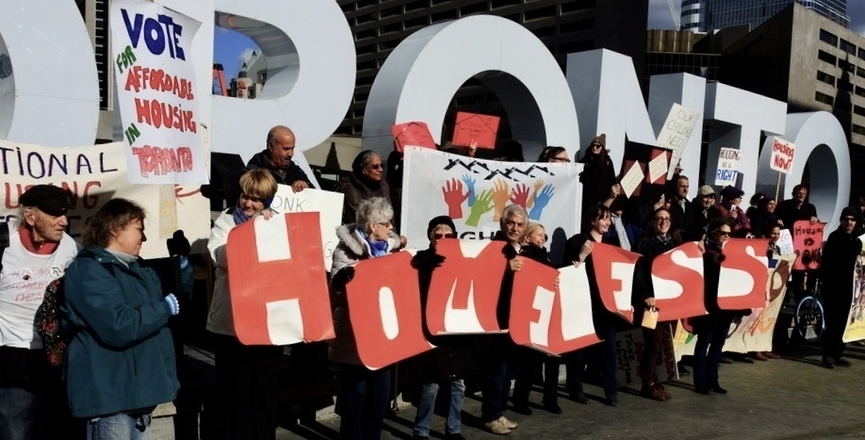First, the worst
1. Toronto Mayor John Tory, for not getting a grip on the homelessness disaster that erupted in his city years ago. Despite ample warnings and evidence, he continues to defend senior bureaucrats who nitpick in a pandemic on whether there should be two-metres spacing around a shelter’s sleeping space or just two-metres laterally.
In December, Mayor John Tory pronounced shelters were “safe” despite over 50 shelter outbreaks with over 600 COVID cases. Never mind that aerosolized transmission is now part of the science and the only true protection for a homeless person in a shelter is one person per room ,or one couple per room.
2. The workers, including those with CUPE Locals 79 and 416, from various departments and city divisions who carry out evictions. Streets to Homes workers, parks ambassadors, parks by-law officers, Toronto Police, Toronto Public Health and Toronto Fire Services have all participated in encampment evictions. It is displacement and a form of modern-day colonization.
3. Toronto’s Medical Officer of Health Dr. Eileen de Villa who seemingly rejected both the science and the advice of hundreds of experienced community doctors and nurses who asked her to order two-metres physical distancing in shelters and to discontinue the use of bunk beds.
In an April media briefing, Dr. de Villa stated there “doesn’t appear [to be] any merit or need for [such] an order to be given.” As a result, six national, provincial and local legal organizations took the city to court to achieve a win. However, as of December 11, the city has yet to meet full compliance with the legal settlement.
4. Mary-Anne Bedard, the general manager of Shelter, Support and Housing Administration (SSHA). In August, the city of Toronto developed a mask by-law which officials said did not apply to shelters.
It was only on September 4 that SSHA issued a memo directing mask wearing for homeless people in shelters. On December 1, the city launched “12 days of giving” calling for charitable donations to help provide PPE supplies specifically for the shelter division of the city. Furthermore, despite evidence of the high risk of transmission COVID risk in congregate settings (the Willowdale Welcome Centre, a shelter for refugees reached a peak of 185 cases), SSHA, under Bedard’s direction, opened a 100-person congregate setting at the Better Living Centre in November.
5. The Canadian Housing and Renewal Association/Association canadienne d’habitation et de rénovation urbaine. This national organization showed poor taste in their celebratory twitter promotion of National Housing Day, given the enormous scope of housing insecurity and homelessness across the country.
6. The federal government for giving $1.9 million to Toronto researchers to study COVID and homelessness instead of housing the people they plan to study.
The best
7. The Encampment Support Network (ESN). 100 per cent volunteer driven, these primarily cultural workers — including musicians — finding themselves with less employment due to COVID, established a grassroots effort of herculean efforts delivering basic survival supplies to Toronto encampments.
ESN gradually adapted to include sophisticated advocacy efforts that drew the support of famous Canadians, including Colin Mochrie, Sarah Polley, Margaret Atwood, The Barenaked Ladies, Broken Social Scene, Feist and more.
8. Khaleel Seivwright, the humble but determined carpenter who began building solid, insulated, wooden shelters to deliver to people in need. His Go-Fund Me page is now approaching $200,000 and his Toronto Tiny Shelters petition has over 55,000 signatures.
He too has adapted to advocate. He deputed, not once, not twice, but three times on the same day to the city’s economic and development committee stressing the safety of his structures that meet a need the city is not. Despite city threats and removal of his structures, he continues to build.
9. Sanctuary Toronto is the David in the Goliath story in Toronto. This organization provides drop-in space, meals, outreach and brave committed advocacy, fearing no one. They joined the legal coalition that took the city to court and have regularly advocated for housing for the people in tent encampments.
10. The legal coalition of Goldblatt Partners, Canadian Civil Liberties Association, Advocacy Centre for Tenants in Ontario, Aboriginal Legal Services, Black Legal Action Centre, HIV and AIDS Legal Clinic Ontario and Sanctuary Toronto. When the city would not ensure physical distancing in shelters, they took the city to court, and won.
11. Church of the Holy Trinity and the Toronto Homeless Memorial, for simply continuing despite adversity with a virtual memorial. The monthly memorial is now 20 years old, and has added COVID-19 as a cause of death. A monthly memorial should never have eight to 11 names added to it.
12. While organized religion has been a bit quiet on the injustices of homelessness in a pandemic, Reverend Alexa Gilmour from Windermere United Church, took a social justice message to the twitter airwaves:
“At a time when humanity is suffering from the collective effects of Covid-19, we can’t leave those made vulnerable by our systemic failures to suffer through another winter without adequate alternatives to overcrowded, undignified, unsafe shelters. More room at the Inn, Mayor Tory. It’s Christmas.”
Cathy Crowe is a street nurse, author and filmmaker who works nationally and locally on health and social justice issues.
Image: Photo by Cathy Crowe



